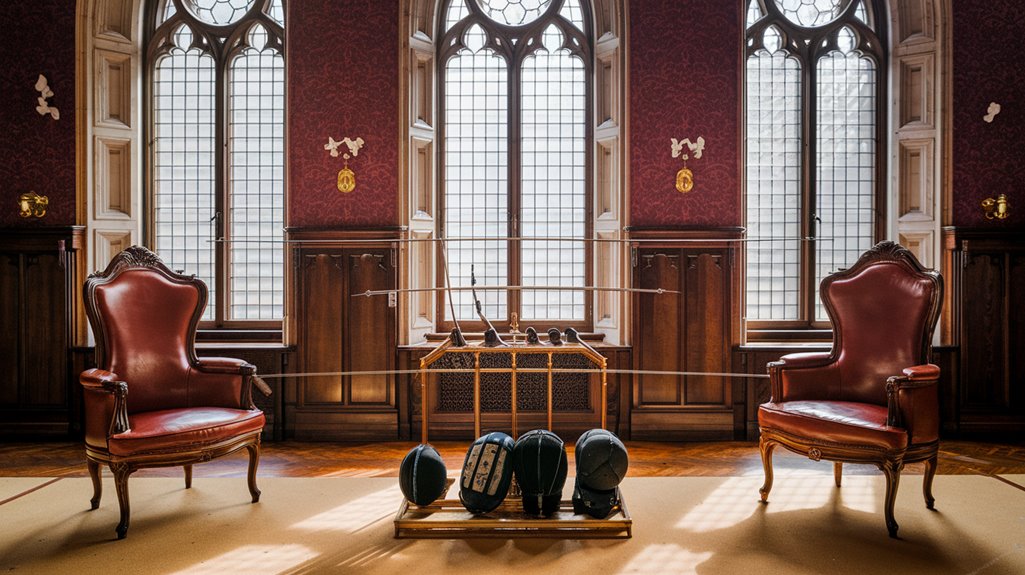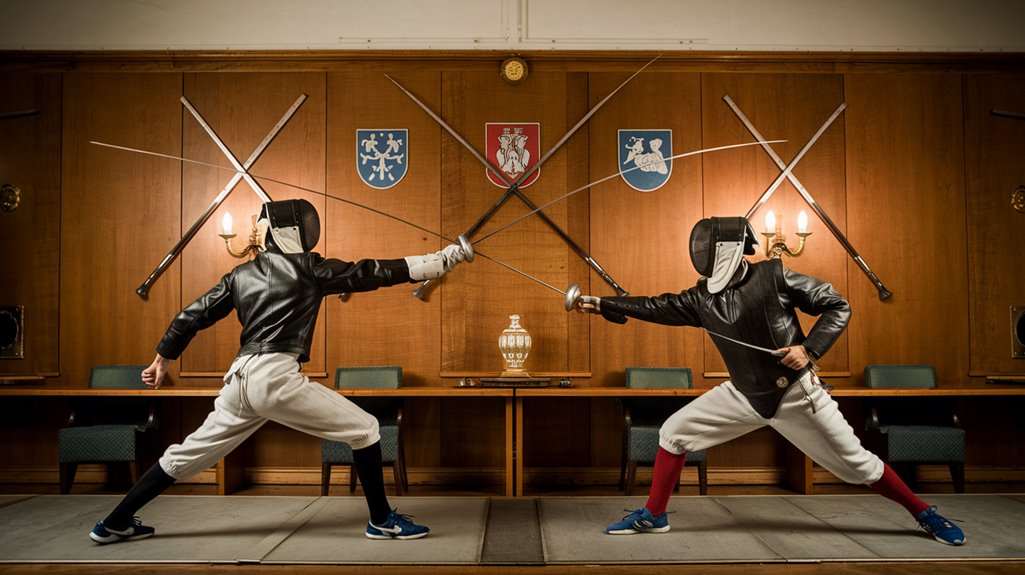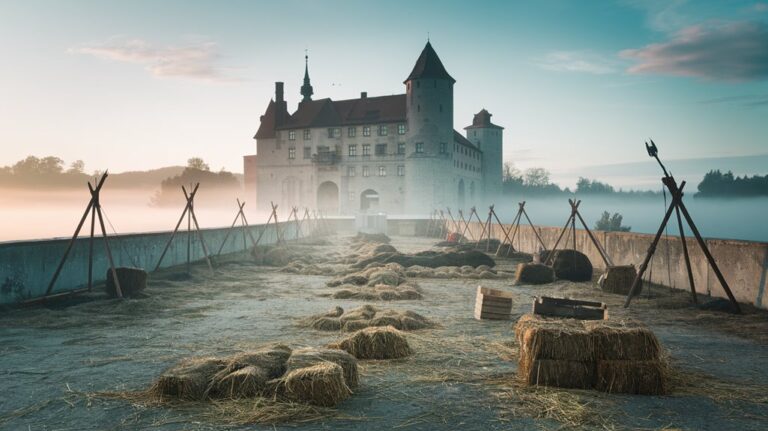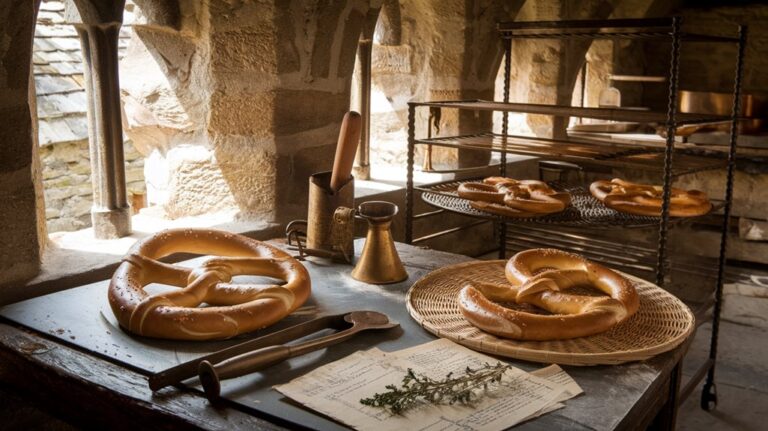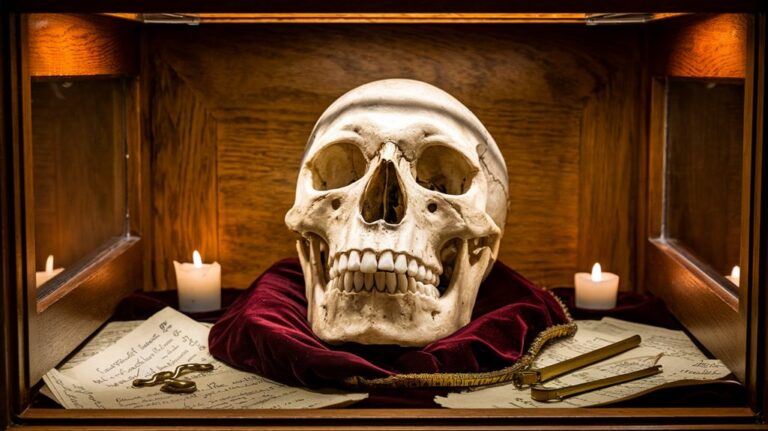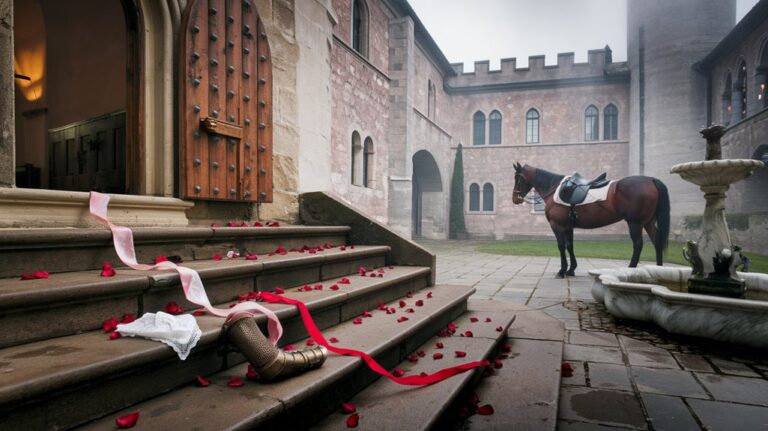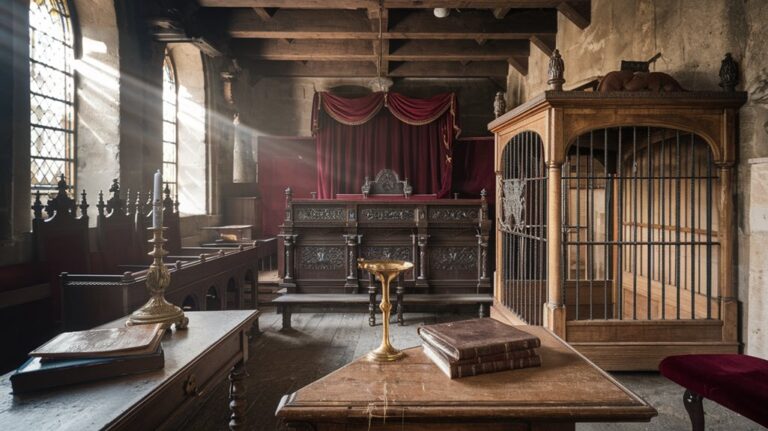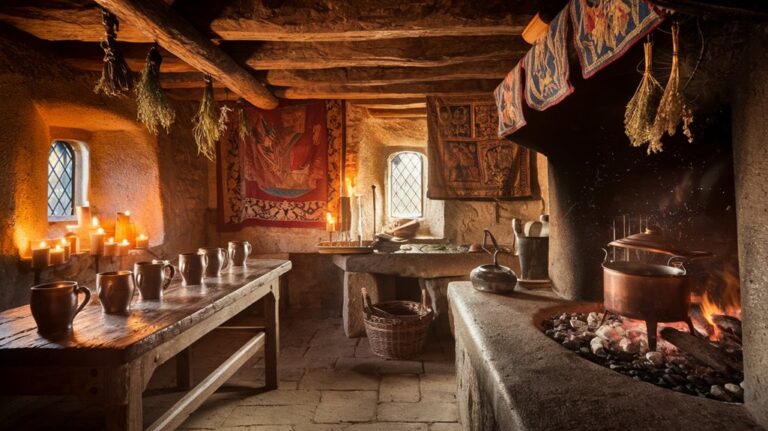Mensur: Germany’s Extreme Sword-Fighting Tradition
You might think you know about historical sword fighting, but Germany's Mensur tradition isn't what you'd expect. It's not about winning or losing – it's about standing your ground while someone swings a razor-sharp blade at your face. For centuries, German university students have participated in this unique ritual where earned scars become badges of honor. What drives educated young people to voluntarily face cold steel, and why does this tradition endure in modern Germany?
The Origins and Evolution of Mensur Fencing
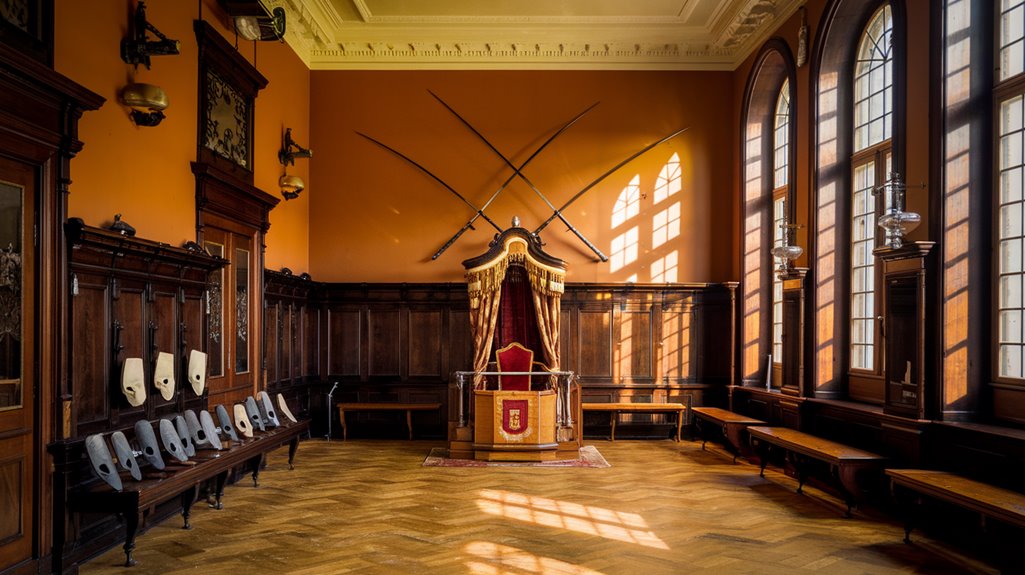
While many historical combat traditions have faded into obscurity, Mensur fencing stands as a remarkable survivor of Germany's martial heritage. You can trace its roots to the German school of fencing, which flourished during the Holy Roman Empire. Early historical manuscripts, like Ms. 3227a, documented the foundational techniques that would influence this unique tradition. The tradition gained significant legitimacy when Emperor Maximilian I granted special privileges to recognized fencing groups.
What began as bloody student sword fights in the 15th century evolved into a regulated practice by the 16th century. The tradition gained structure through student corporations, known as Studentenverbindungen, which established formal rules and introduced specialized weapons like the mensurschläger. Modern bouts require participants to wear protective gear to ensure safety while maintaining tradition.
Despite facing various bans throughout history, including during the Nazi regime, Mensur fencing has persisted. Today, it continues to thrive among student fraternities, with over 400 organizations still practicing this centuries-old art.
Weapons and Protective Equipment
The specialized equipment used in Mensur fencing reflects its evolution from lethal duels to a controlled test of character.
You'll find two main Schläger variations: the Korbschläger with its basket-type guard and the Glockenschläger with its bell-shaped guard, primarily used in eastern Germany. The blade itself is long and flexible, sharpened on both edges for precise striking. During training sessions, blunt blades are used to minimize potential injuries.
Protective gear is extensive but strategically designed. Participants traditionally wear formal attire under their protective equipment.
You'll wear iron spectacles with wire netting to shield your eyes, while a padded leather vest protects your torso. Your weapon arm gets additional protection through a leather sleeve and gauntlet, and your non-weapon hand stays secured behind your back.
Two physicians stand ready during each bout, ensuring your safety while you fence from a fixed position under strict rules.
Rules and Regulations of Modern Practice
Modern Mensur stands apart from traditional combat sports since participants aim not to defeat their opponent but to demonstrate unwavering courage.
During this test of tactical endurance, you'll stand at a fixed distance from your opponent, prohibited from moving your feet or dodging blows aimed at your head.
The ceremonial conduct follows strict protocols. Two physicians supervise the bout, which continues until first blood appears on the face or head. The specialized mensurschläger sabres used in these bouts feature sharpened blades and protective basket hilts.
You won't be judged on your swordsmanship skills but rather on your ability to maintain composure under pressure. Flinching is forbidden, emphasizing the core principle of stoic endurance. Today's participants are required to wear protective mail gear to ensure safety while maintaining the tradition's intensity.
The vice-chairman carefully arranges matches between opponents of similar physical capabilities, ensuring fair and meaningful encounters that test character rather than combat prowess.
Historical Significance During World War II
During Nazi Germany's reign, academic fencing faced an unprecedented challenge as the Third Reich actively suppressed Mensur traditions due to their connection with independent student fraternities.
Under intense Nazi repression, fraternity members didn't surrender their cherished practice. Instead, they formed secret comradeships to continue their traditions through clandestine practices. Much like how multiple authors increase credibility in modern blogging, these secret societies maintained legitimacy through their collective participation.
The determination to preserve Mensur was remarkable, with over 100 secret encounters occurring in Freiburg alone during World War II.
After the war, these resilient fraternities emerged from the shadows to officially resume their traditions.
Key aspects of Mensur's wartime survival:
- Formation of underground groups like the SC-Comradeship Hermann Löns
- Intensification of secret duels from 1941 onward
- Maintained fraternity solidarity despite official suspension
The Cultural Impact of Mensur Scars
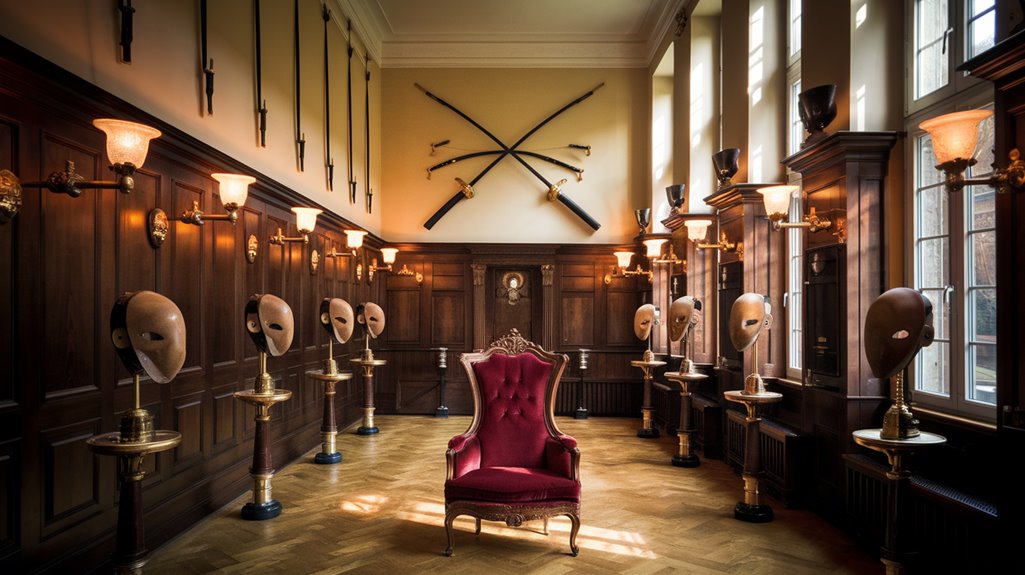
Throughout Germany's academic history, dueling scars from Mensur became powerful symbols of status and character, particularly among the nation's elite social circles.
You'd find these marks mainly on the left side of men's faces, where they served as badges of honor that could enhance your social standing and marriage prospects. The scar symbolism was so potent that some men even paid doctors to create artificial dueling marks. Even prestigious figures like Otto von Bismarck championed these scars as true marks of valor.
The social acceptance of these scars reached its peak in the late 19th and early 20th centuries, when they were viewed as signs of courage and resilience. During this era, students at German universities engaged in combat with Mensurschläger swords. If you bore multiple scars, you'd be seen as especially brave and steadfast.
However, this perception shifted dramatically after World War I, when such marks became grim reminders of conflict rather than prestigious symbols.

